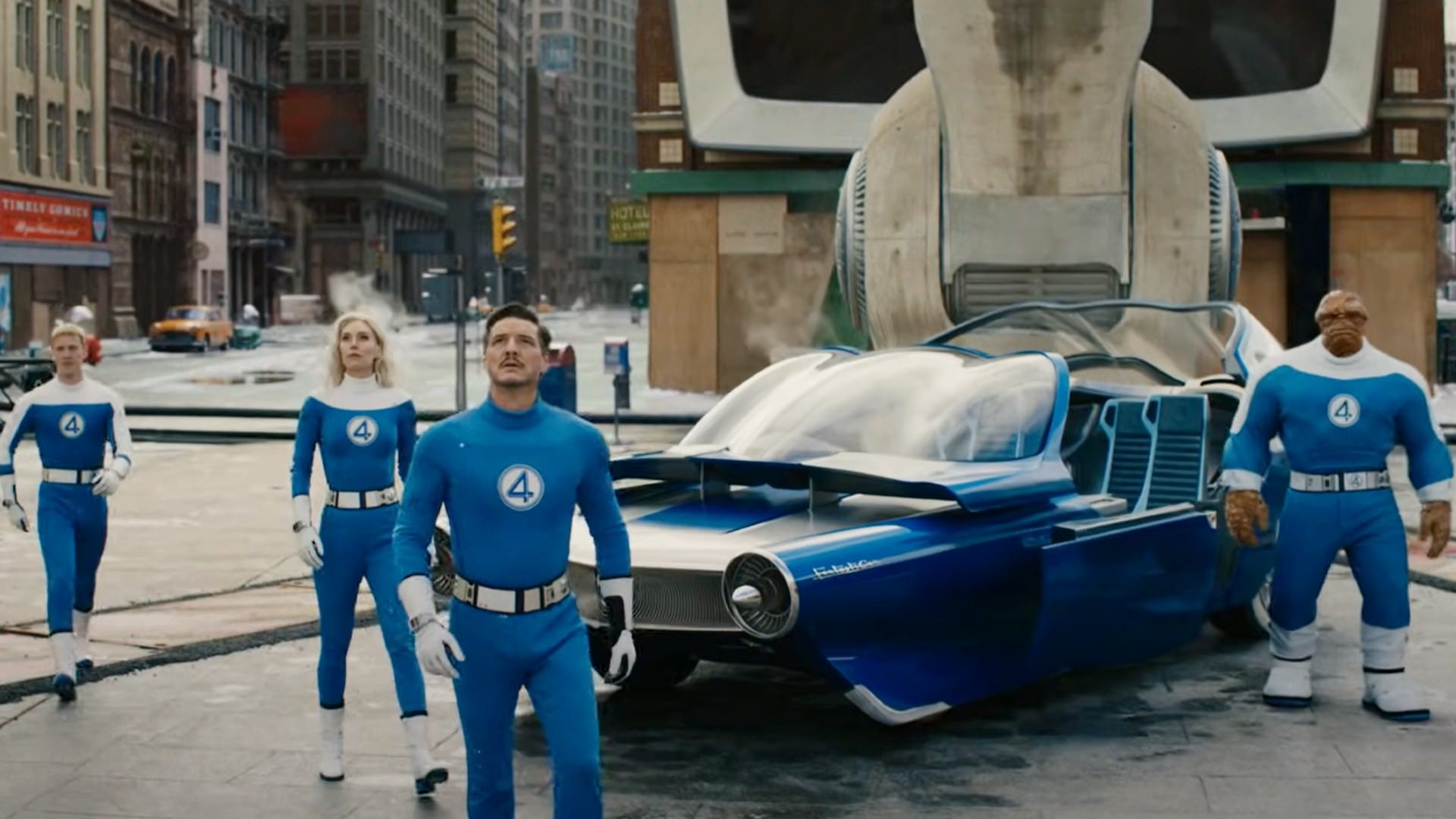The Fantastic Four: First Steps
The Fantastic Four: First Steps is the most Kirbyesque the Marvel Cinematic Universe has ever felt.

The Fantastic Four: First Steps is the most Kirbyesque the Marvel Cinematic Universe has ever felt. Stan Lee was always the titan of Silver Age comics that the MCU lionized, even if the company never gave him what they owed. They even kept him in their back pockets with a cameo in every film until his death. Jack Kirby, who left Marvel on poor terms at the peak of the industry, they kept at a dishonorable distance for decades.
The MCU’s first go with Marvel’s First Family and the first film of their new “phase” finds itself indebted to Jack Kirby’s colorful and vibrant sizzle, apocalyptic optimism, and cartoonish futurism. Not even the Guardians of the Galaxy films were this whimsical. Setting things in the 1960s—in Kirby’s heyday and during his canonized runs at Marvel—makes the tonal shift from the “I’m a big-boy now” Captain America: Brave New World and the grimey Thunderbolts* even stronger. It’s also the first film in the MCU to intentionally call so much attention to Kirby by including a quote of his in the mid-credits scene and revealing that the multiversal Earth-828 setting nods to his August 28th birthday.
Maybe the Kirby turn is a sign that what’s to come from the next stage of the MCU will look a little more Kirby than the colorless past has. More likely, Kirby’s fun style is a one-time change-up to provide a tonal shift from the previous four pre-MCU Fantastic Four filmic flops. The gamble mostly pays off either way. It’s easily the best Fantastic Four film and is one of the more fun things to come from Marvel in quite some time.
The other major change is in avoiding the four superheroes’ origin story. Much like when the MCU took over Spider-Man, they decided that audiences had seen that enough and would use the pre-MCU productions to their advantage like background viewing. First Steps begins four years after their space voyage and superhero careers. Reed Richards (Pedro Pascal) and Sue Storm (Vanessa Kirby) find out they are having their first child together. The film revolves around these two and their flaws and insecurities as new-ish supers and brand new super-parents. Will they sacrifice their child to Galactus (Ralph Ineson) to save humanity? Can they find another way to save their world from the world-eating monster? How do they relate to each other differently now? Will the baby have superpowers?
Johnny Storm (Joseph Quinn), aka the Human Torch, in a more limited role that is reflected by the sharp decrease in recognizability from Kirby and Pascal to Quinn, hopelessly vies for the attention of the always busy Reed and, to a lesser extent, the viewers. He still manages a cathartic development in his more contained role that pays off in the climactic battle. The Thing (Ebon Moss-Bachrach) is given the shortest end of the stick and the script, a four-person collaboration, struggles to find something for him to do, although, like in the Kirby creation and a nod to the Golem, this The Thing is the first to be portrayed as Jewish.
Director Matt Shakman lifts the recognizable story from “The Galactus Trilogy” comics once again as the starting place. A chrome extraterrestrial herald known as the Silver Surfer zooms onto Earth on a flying surfboard and declares the coming of Galactus, an unstoppable and godlike world-eater. (The potentially heralded world destruction at the hands of a far superior power also recalls both The Day the Earth Stood Still and, in another way, the Remembrance of Earth’s Past trilogy.) Both antagonistic roles are kept to a minimum with only a few very controlled scenes permitted for each. For the first time, the Silver Surfer is played by a woman (Julia Garner), in a character, Shalla-Bal, who is often the surfer’s love interest in the comics. She has a backstory that the film rushes involving her own planet’s destruction and motherly sacrifice. Given Sue’s new mother status and mild discord between Sue and Reed about parenthood, it surprised me that the Silver Surfer and Sue never interacted one-on-one where their parallels could have been taken much further.
First Steps looks like a family-oriented patisserie. The colors are cakely bright and plentiful and that helps make everything fun again. The uniforms are classic '60s bichromatic blue and white sweaters with turtle necks and all. Their car flies and an AI robot keeps the property running. Beneath the glib-fun and cartoonish aesthetic is an Eisenhower-era hopefulness. They build teleportation devices and intergalactic spaceships more easily than most American states can build functioning transit systems. Public distrust of the supers can be quickly swatted away with a good speech and openly boasting their baby around. The Baxter Building steps right out of (pro-)technocratic wet dreams and onto the big IMAX screens with its slick futuristic architecture and absent workforce. A newscaster even adapts a quote about small groups changing the world that is usually (dubiously) attributed to anthropologist Margaret Mead to describe their heroic efforts. How the Fantastic Four are rich enough to redefine the New York City skyline doesn’t matter; here, one must also be rich to change the world. (In one scene, Reed even "childproofs" the city by helping to weaponize the police force on nearby criminals.) There is never any doubt the heroes will pull it off, even if Pascal tries his best to sell doubt. First Steps peddles a very individualistic ideal that narrows down heroism to the small and mighty actions of a few. And that too feels a bit Kirbyesque.